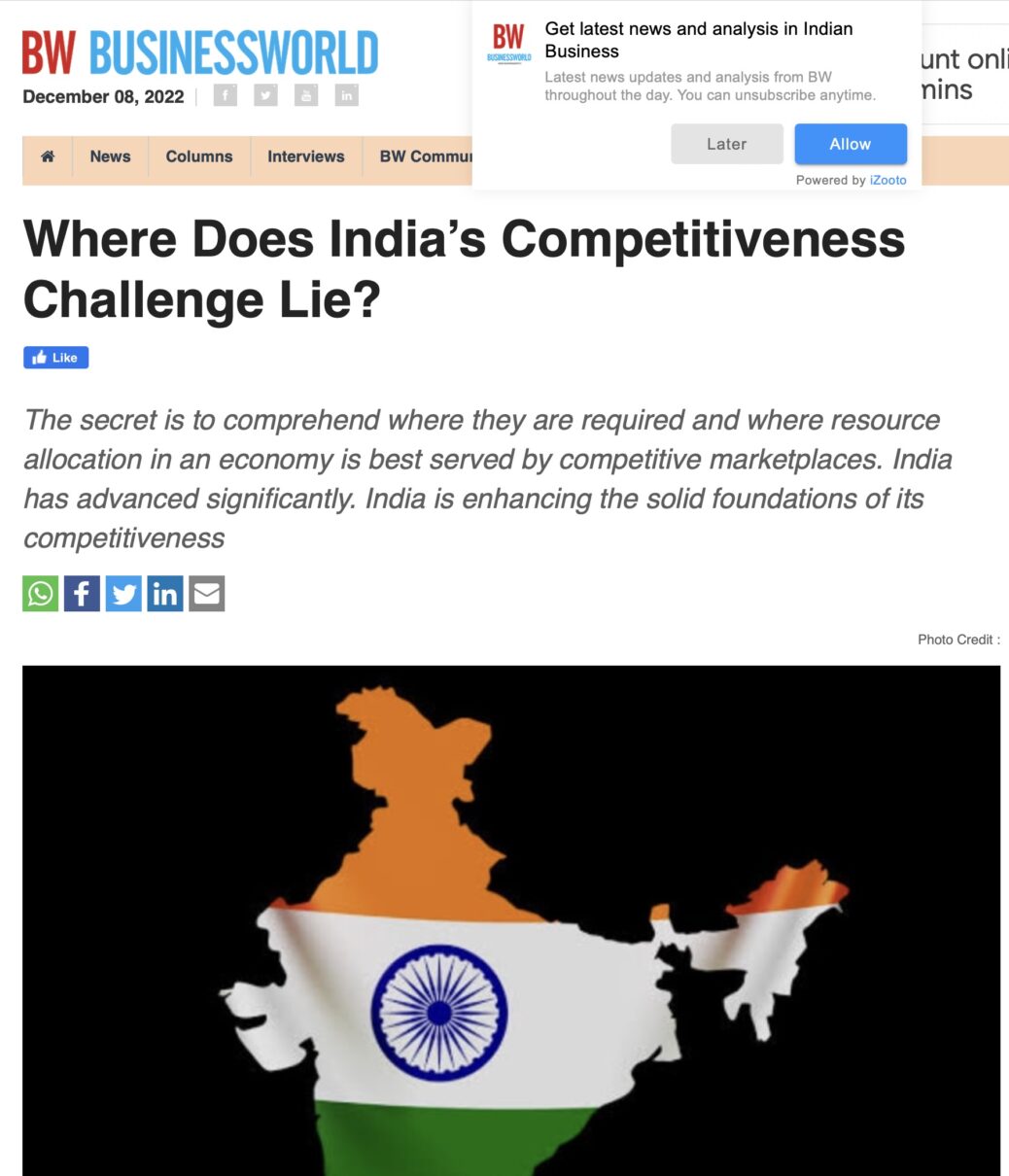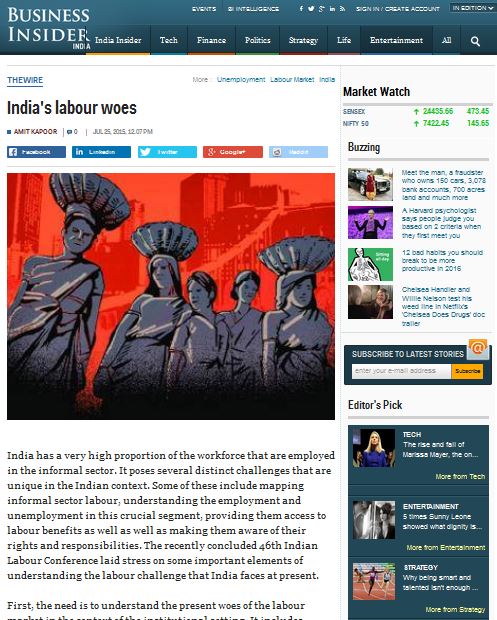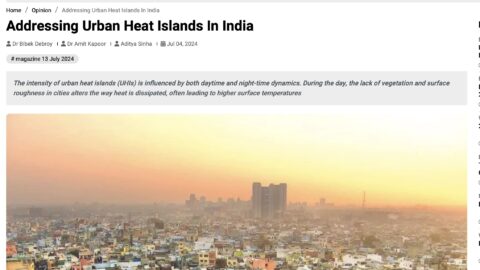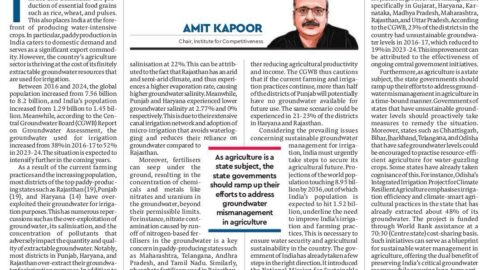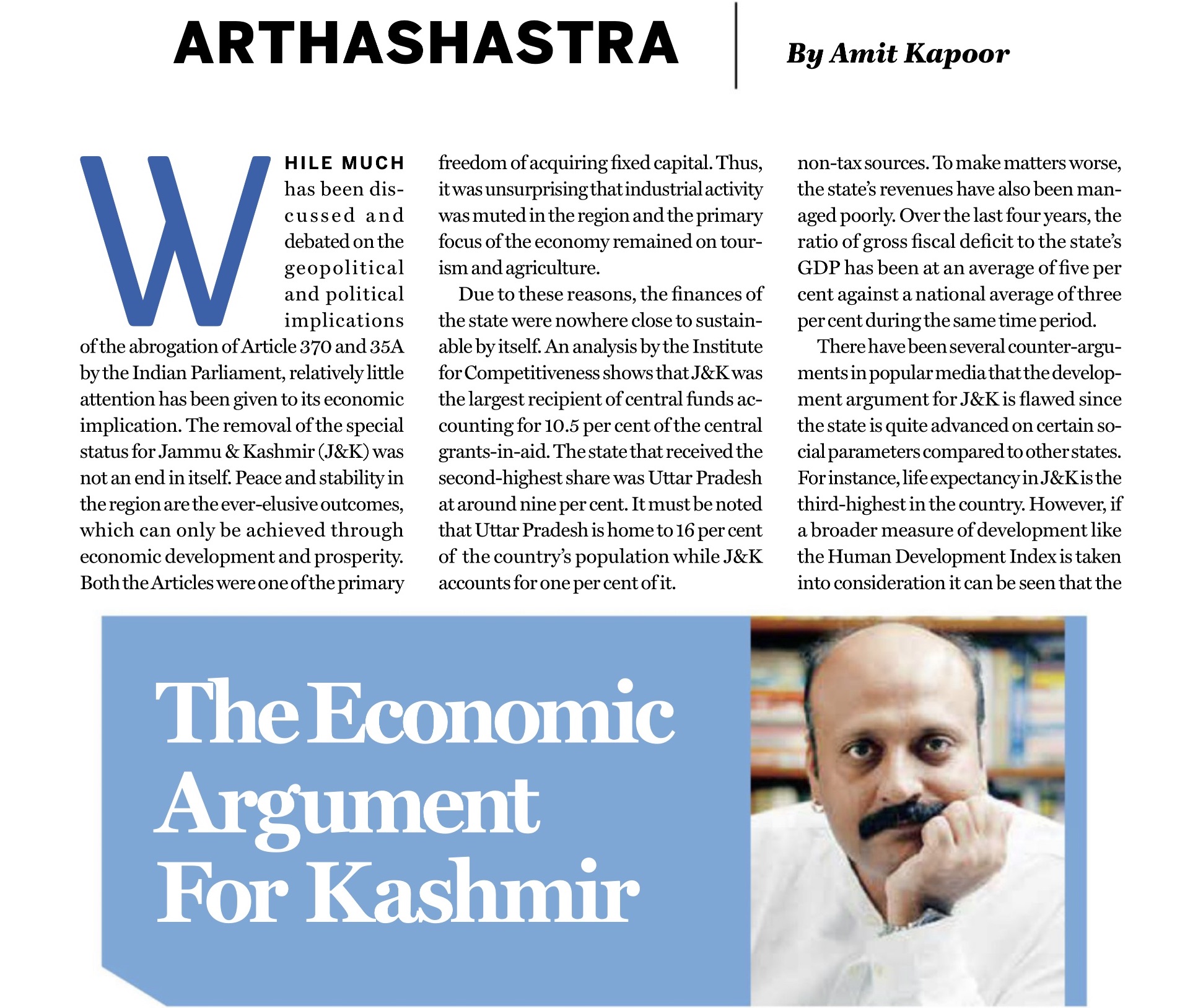The secret is to comprehend where they are required and where resource allocation in an economy is best served by competitive marketplaces. India has advanced significantly. India is enhancing the solid foundations of its competitiveness
It is not hidden from anyone that a country’s economic growth is intrinsically tied to its competitive strengths. In the case of India, we have seen that the country’s competitiveness has registered substantial progress on important socio-economic indicators. Since India entered the Amrit Kaal with a sharp focus on determining the country’s developmental strategy over the next twenty-five years, a lot has been remarked about the nature of development and assessing the past trajectories while making projections for the future, presenting us with the right time to take stock of the situation – look at what has worked and where the challenges lie.
These need to be particularly looked at through the lens of competitiveness fundamentals. For instance, India has done well in sectors like improving access to education, infrastructure development and quality of the business environment. According to data from the World Bank, the proportion of the population with access to electricity increased from 83.9 percent in 2014 to 99 percent in 2020 as a result of a significant growth in the electrical network. The amount of electricity was increased by more than five times between 2014 and 21 compared to the years between 2007 and 2014, with the Leisang Village in Manipur becoming the final village to be connected to the national power grid by April 2018. The nation has made significant improvements to its transportation system. Nearly 7 Lakh km of road have been built since the Pradhan Mantri Gram Sadak Yojana began, and 99% of the targeted habitations now have access to all-weather roads. From 10,000 kilometres of rail lines in 1950 to 63,000 kilometres in 2015, the rail network has grown. India is predicted to travel 1.2 lakh kilometres by 2025. Similarly, education – an essential marker of any country’s competitiveness – saw considerable improvements. In India, there will be 1,043 universities by the year 2020, up from 723 in 2014. The percentage of students in the eligible age group enrolling in higher education, known as the gross enrollment ratio, was 27.1% in 2019–20 compared to 24.3% in 2014–2015. The number of students enrolling in higher education increased by 11.4 per cent during the past five years. Additionally, since independence, food production has grown six-fold. Additionally, there has been an increase in food output, going from 252 million tonnes in 2014–15 to 316 million tonnes in 2021–22. Although these achievements are noteworthy, there is still much room for improving economic results and the business ecosystem. To do this, it is critical to identify the primary challenges facing the nation’s competitiveness, which, if conquered, will propel the nation to a higher stage of development.
One of the key challenges lies in the way the markets are structured. While India has concentrated on increasing its inputs, the markets structure experiences distortions at multiple levels. These market structures, especially at the firm level, are responsible for translating inputs into outcomes. In other words, distortions in the market happen when production and prices are at levels different from where they would be in a competitive market. One of the reasons behind this is the misallocation of resources in an economy due to interference in the supply-demand dynamic. In essence, it occurs when a country’s economy underutilises its own potential.
The “efficiency” gap in India is estimated to cost the country almost 4% of GDP annually, according to a World Bank analysis titled “In the Dark: How Much Do Power Sector Distortions Cost South Asia.” The paper examines the complete chain of energy production and distribution and identifies a number of variables that contribute to power shortages, including inadequate energy production, transmission, and distribution. India has put much effort into reducing the distortions with several programmes to boost operational effectiveness and expand the transmission and distribution infrastructure.
The education sector has enormous opportunities to remedy market distortions. As stated earlier, enrolment and infrastructural inputs have shown encouraging trends. The quality of education should be prioritised more in order for these inputs to produce better outcomes. With this emphasis, increased enrollment would result in improved learning results. It is crucial to address this connection. Over 14500 select schools will be developed nationwide under the recently approved centrally supported PM Schools for Rising India (PM SHRI) programme, which will be run by local, state, and federal governments and the national government. The program’s provision of high-quality education while prioritising inclusivity and equity is one of its main components. With the program’s emphasis on students’ varied backgrounds, multilingual demands, and range of academic talents, learning results could be positively impacted.
Another area where market distortions raise operating expenses is the business environment. Individual regulations were strengthened in the past, but the public sector’s capabilities and underlying institutions that supported the regulatory burden were relatively weak. India has made real attempts to improve market arrangements in recent years, taking more than just passing notice of these anomalies. Many measures have been adopted to reduce the load of regulations and increase the ease of doing business in India. Online registration for MSMEs is now available through the Udyam Registration portal, an online gateway to access counselling, grievance resolution, and other measures. Additionally, other steps taken to improve market structures are the National Logistics Policy framework, which aims to expedite procedures and lower logistics costs.
It is critical to realise that some market distortions are required. Although investments have been appropriately directed, market distortions may result in less than ideal results. Governments may manipulate market prices by, for example, subsidising production in a variety of industries, such as steel, agriculture, electronics, and others when markets, left to their own devices, may not produce efficient results. The secret is to comprehend where they are required and where resource allocation in an economy is best served by competitive marketplaces. India has advanced significantly. India is enhancing the solid foundations of its competitiveness. Future plans for the company are aspirational, and the current endeavour to address market distortions must be carried out with greater vigour if the past and future reforms produce results with the greatest efficiency.
The article was published with Business World on December 5, 2022

